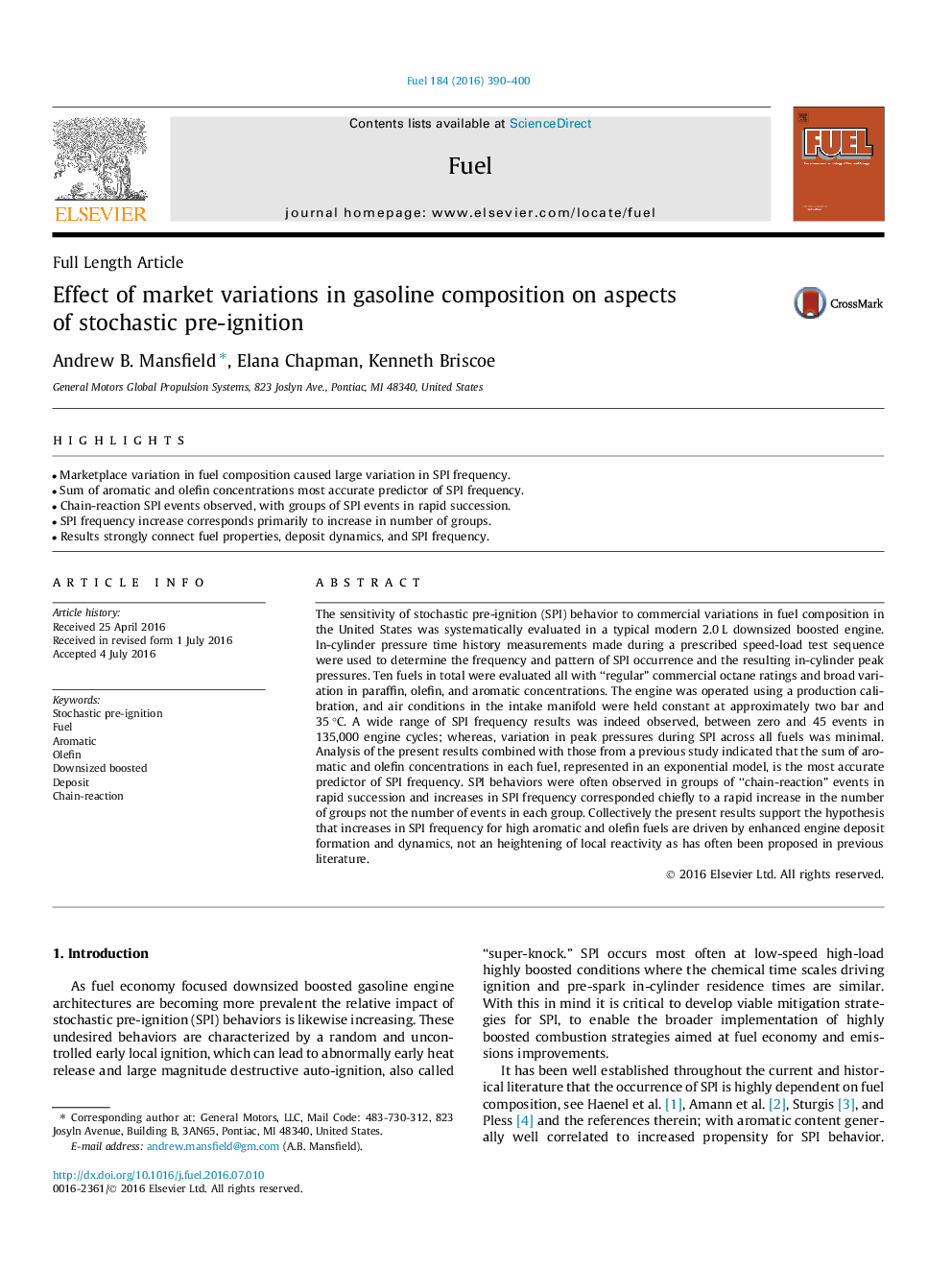| Article ID | Journal | Published Year | Pages | File Type |
|---|---|---|---|---|
| 6633031 | Fuel | 2016 | 11 Pages |
Abstract
The sensitivity of stochastic pre-ignition (SPI) behavior to commercial variations in fuel composition in the United States was systematically evaluated in a typical modern 2.0 L downsized boosted engine. In-cylinder pressure time history measurements made during a prescribed speed-load test sequence were used to determine the frequency and pattern of SPI occurrence and the resulting in-cylinder peak pressures. Ten fuels in total were evaluated all with “regular” commercial octane ratings and broad variation in paraffin, olefin, and aromatic concentrations. The engine was operated using a production calibration, and air conditions in the intake manifold were held constant at approximately two bar and 35 °C. A wide range of SPI frequency results was indeed observed, between zero and 45 events in 135,000 engine cycles; whereas, variation in peak pressures during SPI across all fuels was minimal. Analysis of the present results combined with those from a previous study indicated that the sum of aromatic and olefin concentrations in each fuel, represented in an exponential model, is the most accurate predictor of SPI frequency. SPI behaviors were often observed in groups of “chain-reaction” events in rapid succession and increases in SPI frequency corresponded chiefly to a rapid increase in the number of groups not the number of events in each group. Collectively the present results support the hypothesis that increases in SPI frequency for high aromatic and olefin fuels are driven by enhanced engine deposit formation and dynamics, not an heightening of local reactivity as has often been proposed in previous literature.
Related Topics
Physical Sciences and Engineering
Chemical Engineering
Chemical Engineering (General)
Authors
Andrew B. Mansfield, Elana Chapman, Kenneth Briscoe,
